
Hyundai Creta 2024 Review: First Drive
- Jan 17, 2024
- Views : 3489

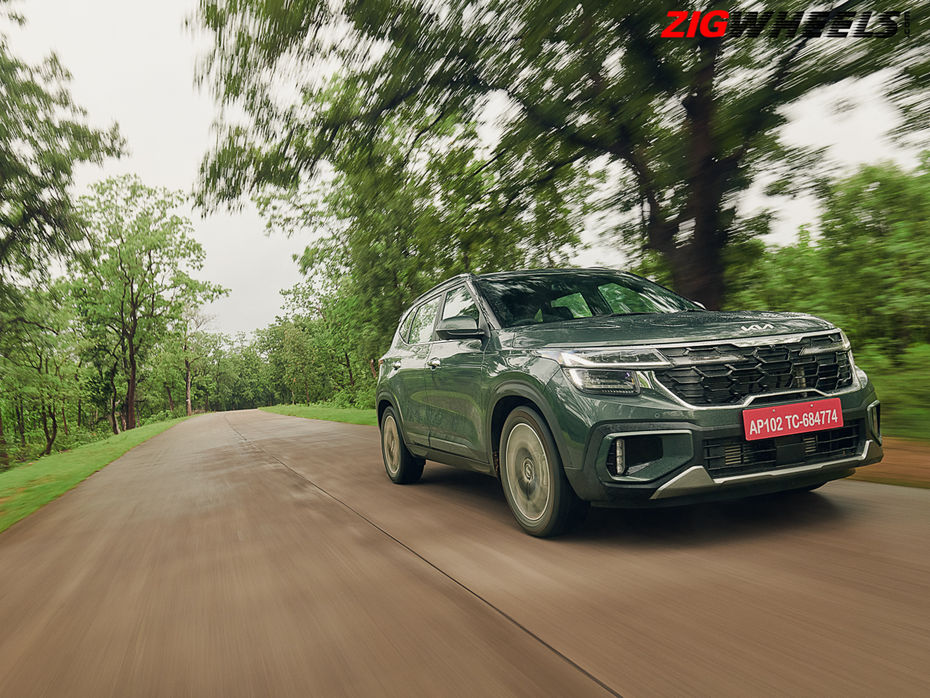
Recommending a Kia Seltos has always been accompanied with a little hesitation. The reason? Two words: Three Stars. Practically everything else about the Seltos seemed spot on. With the facelift, Kia claims to have made the SUV safer with “reinforcements” to the structure. How much it actually manages to score in the new, stricter crash test remains to be seen.
But now with that out of the way, I have two words to describe the Seltos: complete allrounder.
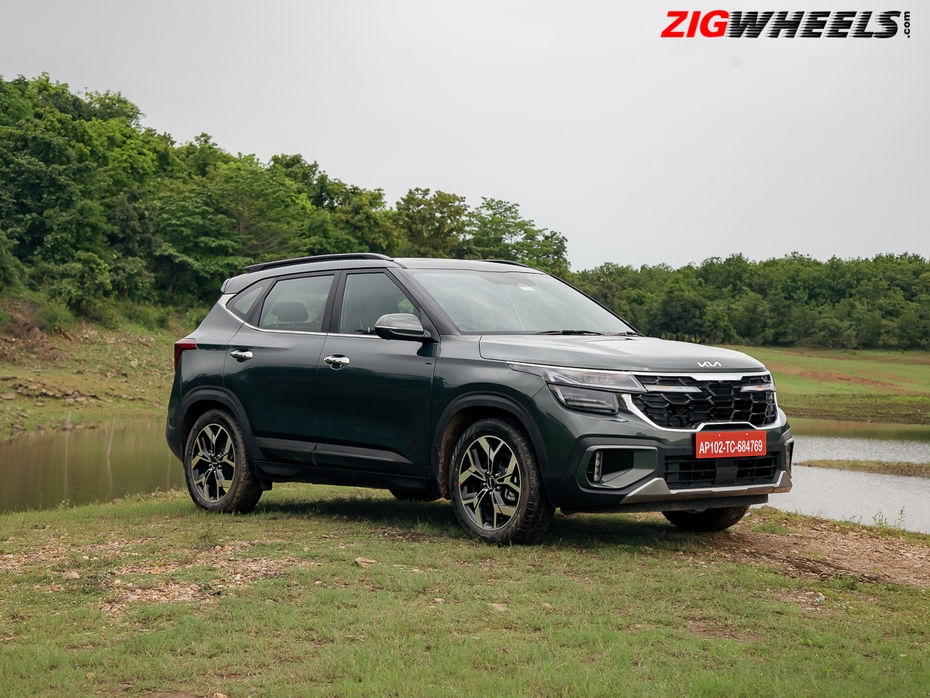
It’s like the design brief was simple: the Seltos’ design works, so don’t ruin it. Updates are not exactly subtle so there’s no way you’re mistaking this for the old one.
The front doesn’t look as flat any more, with a rounder and larger grille. The daytime running lamps on the grille are placed lower now, and they run straight into the redesigned full-LED headlights and down into the indicators that are now dynamic. Over to the rear — the boot lid now flaunts curves and the connected tail lamps help accentuate the width of the car. Connected tail lamps have almost ‘digital’ graphics. Quite futuristic, and likeable!
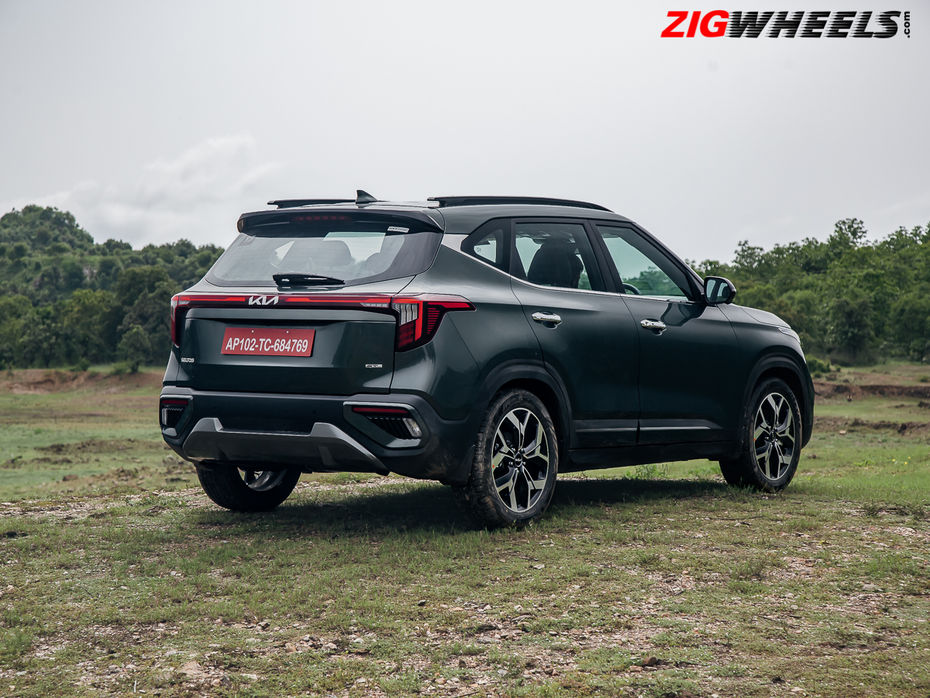
What I also like is the better differentiation between the Tech Line and the GT Line. The GT gets different bumpers both at the front and the rear, larger 18-inch wheels (as opposed to 17-inch units) and a functional dual exhaust setup as well.
There’s a new ‘Pewter Olive’ shade for you to pick. And If you want something that’s Batman-approved, pick the X-Line that’s finished in a delicious matte graphite shade.
Also Check Out: 2023 Kia Seltos HTX+: All Details You Need To Know About The Top-end Tech Line Trim In 10 Images
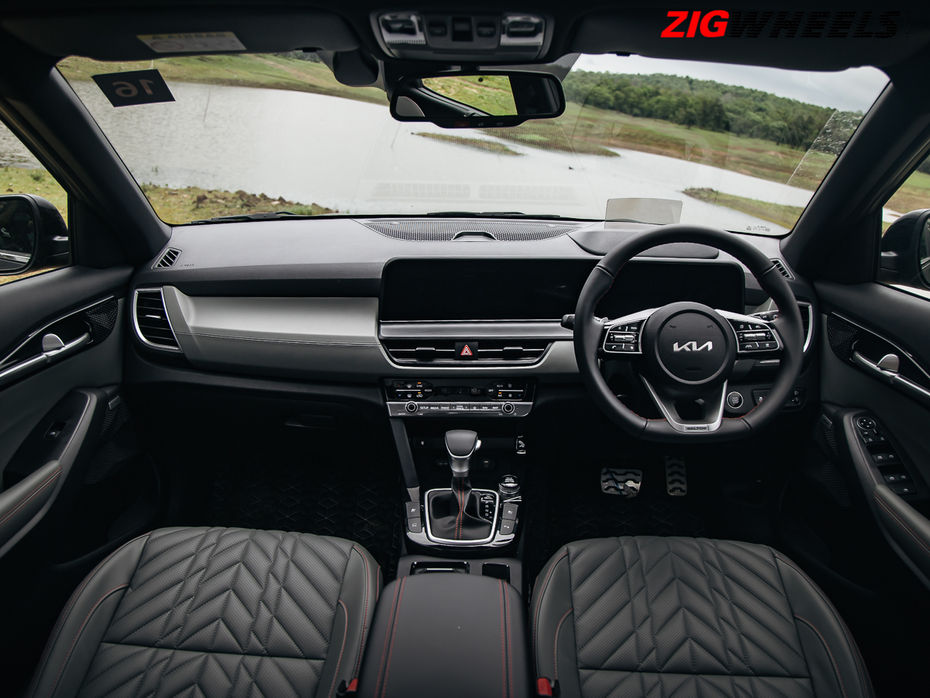
Kia has chosen to not mess with the Seltos’ interior too much. Right off the bat, the new colour themes stand out. The Sage Green for the X-Line, all black for the GT line, and Tan-Black for the top-spec Tech Line.
Quality continues to be a highlight, but it’s no different than what it used to be. There’s leatherette on the dash, and on the door pads: both front and rear. The dashboard’s design looks similar, but it’s not the same.
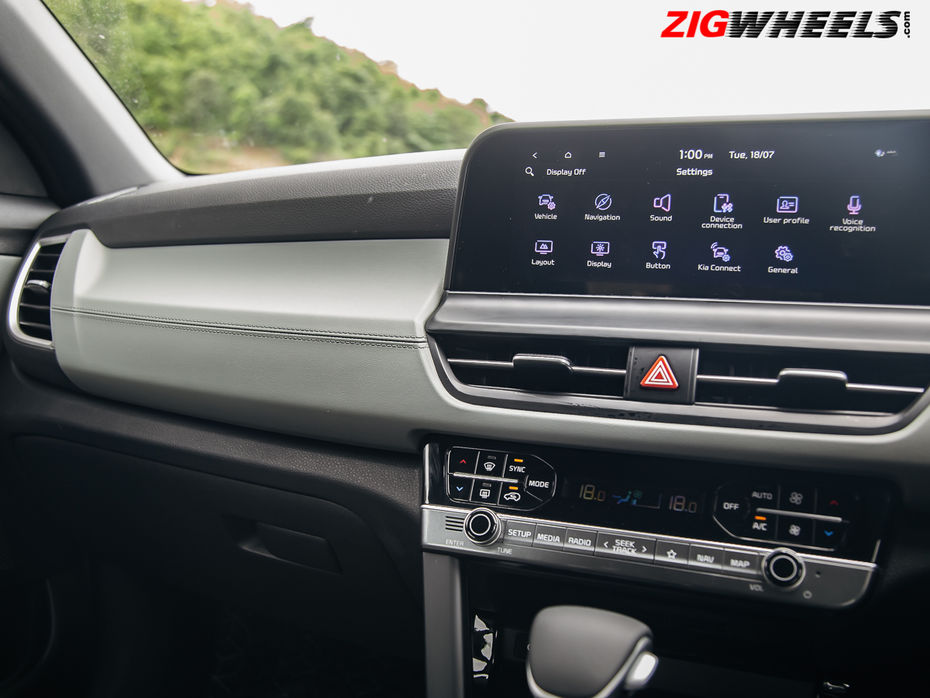
Changes to the dashboard design are subtle, but noticeable. The 10.25-inch touchscreen is unchanged, but it doesn’t have a massive bezel surrounding it. The ‘feather-touch’ hot keys underneath the screen have been removed entirely. The screen now sits lower on the dashboard. The central AC vents are slimmer too.
As a result, your view from the driver’s seat is substantially different. The dash appears lower and you get a clearer view of the bonnet. If this is your first big-ish car, this will give you that little extra dose of confidence.
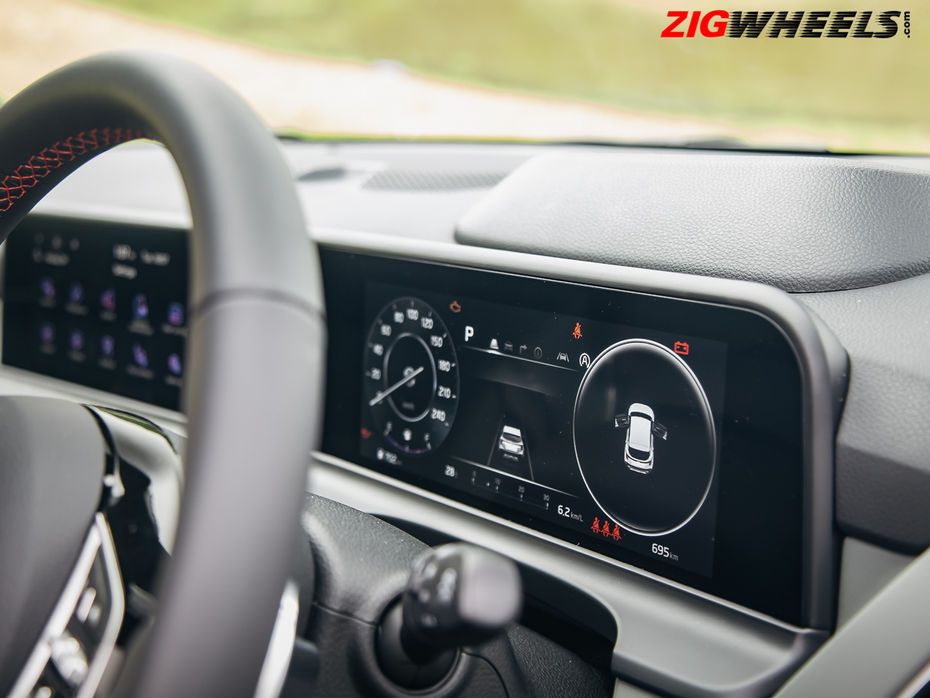
The touchscreen curves into another 10.25-inch display that functions as the instrument cluster. This screen has great graphics, is super clear and gets four themes that can be linked to the drive modes.
Also new is the slab of 22 buttons and two knobs, placed under the air vents. The bulk of these buttons are for the new dual-zone climate control feature. The rest are physical (finally!) buttons for the infotainment.
The Seltos was always a loaded car, and the list is way too long, so here’s the highlight reel:
|
Powered Driver’s Seat |
360° Camera |
|
Front Seat Ventilation |
8-Speaker Bose Audio System |
|
Auto Headlight And Wipers |
Wireless Charger |
|
Air Purifier |
Auto-dimming IRVM |
The heads-up display was earlier available on the GT Line, but is now exclusive to the X Line.
Smaller but significant updates include auto up/down function for all power windows, a backlit power window console and a limiter function for the cruise control. At the rear, the chargers are now Type-C and support fast charging, and there’s white LED reading lamps too. Other than that, nothing new for the rear occupants — sunblinds, AC vents, armrest, the usual.
As a package, there’s no real miss here. However, wireless Android Auto/Apple CarPlay for the 10.25-inch screen (it’s available on the lower variants that get a smaller 8-inch screen), and memory function for the powered driver’s seat would’ve been nice to have.
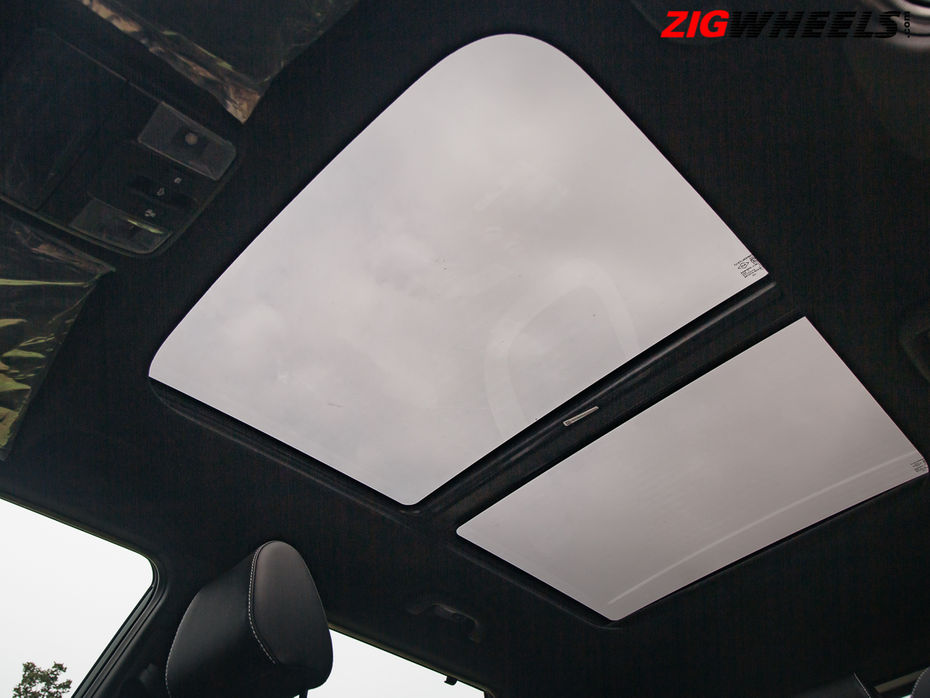
Space for the rear occupants remains unchanged. That’s to say it’s not extraordinary, but you will be comfortable. A six-footer should be comfortable behind another. There’s enough kneeroom and footroom even with the front seat pushed all the way down. Complaints? Well, the seat back continues to be flat-ish, which leaves you wanting for a little more back support on longer drives. The seat squab is short too, taking away crucial underthigh support. Also, the Seltos’ cabin is best suited to four adults and a child. Five adults will feel like a squeeze, especially if they’re generously proportioned. That said, the cabin experience in the facelifted model is elevated significantly by the panoramic sunroof. It lets in so much light that it makes the cabin feel larger than it actually is.
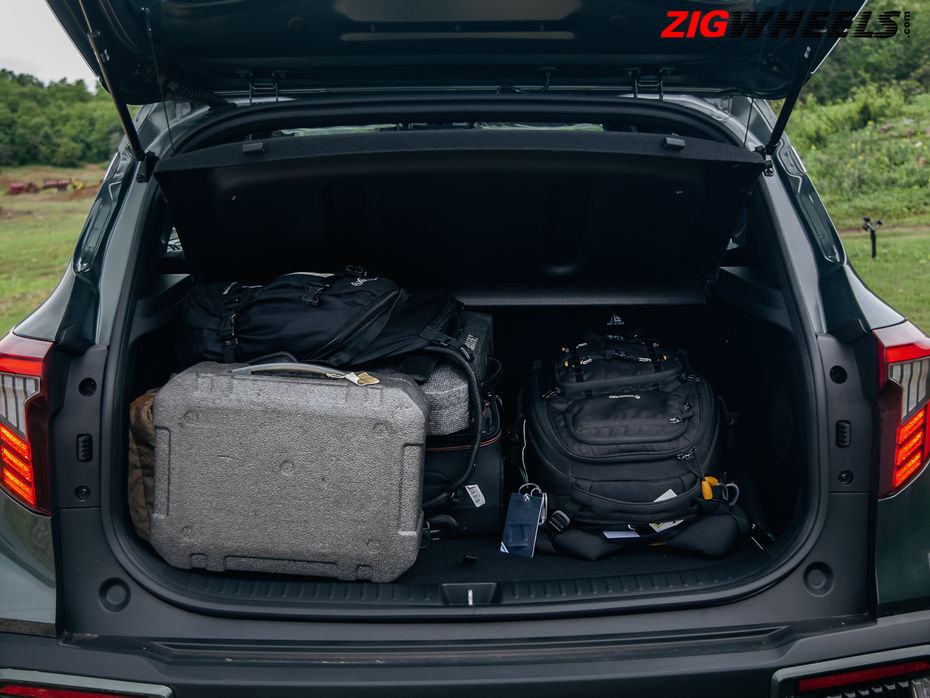
Boot space also remains unchanged at 433 litres. It’s the largest on paper, but in terms of real-world usage the VW-Skoda twins will pack in more luggage. Rear seats get a 60:40 split or you can fold them away altogether for more luggage space.
Also Read: In Depth: Facelifted Kia Seltos And Its Variant-wise Features
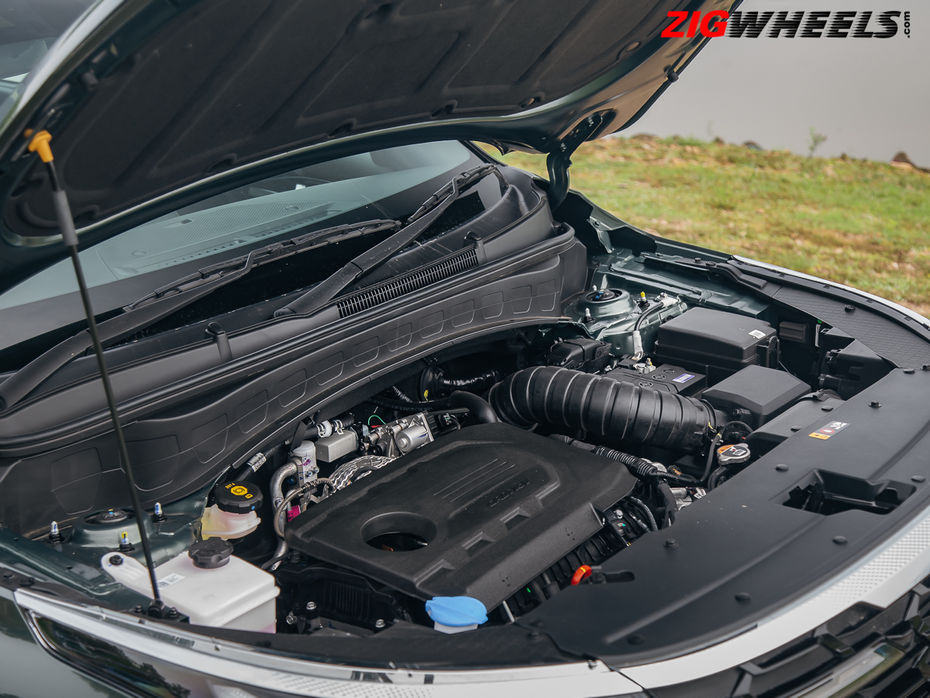
Kia continues to offer three engine options with the Seltos. There’s the tried-and-tested 1.5-litre petrol (available with a manual and a CVT), a 1.5-litre diesel (iMT or 6-speed auto) and the updated 1.5-litre turbo-petrol (iMT or 7DCT). Each one serves a specific purpose.
Based on previous experience, the 1.5-litre petrol is a gem of an engine. Smooth, relaxed, refined and perfect for a calm cruise. With light and easy controls, it’s the one to pick if you intend to drive mostly in the city with an occasional weekend trip. Pick the CVT if budget permits. Rather odd that the CVT is available only in one variant.
Odd-er still, is that the diesel and turbo-petrol motors don’t get a manual at all. A clutch-less iMT is your only option if you want to ‘shift’ gears yourself. This setup isn’t crude, and it functions as intended. It does manage to take the stress out of driving in bumper-to-bumper traffic. What might make you reconsider is that the price jump to an actual, proper automatic isn’t a huge pinch on the pocket.
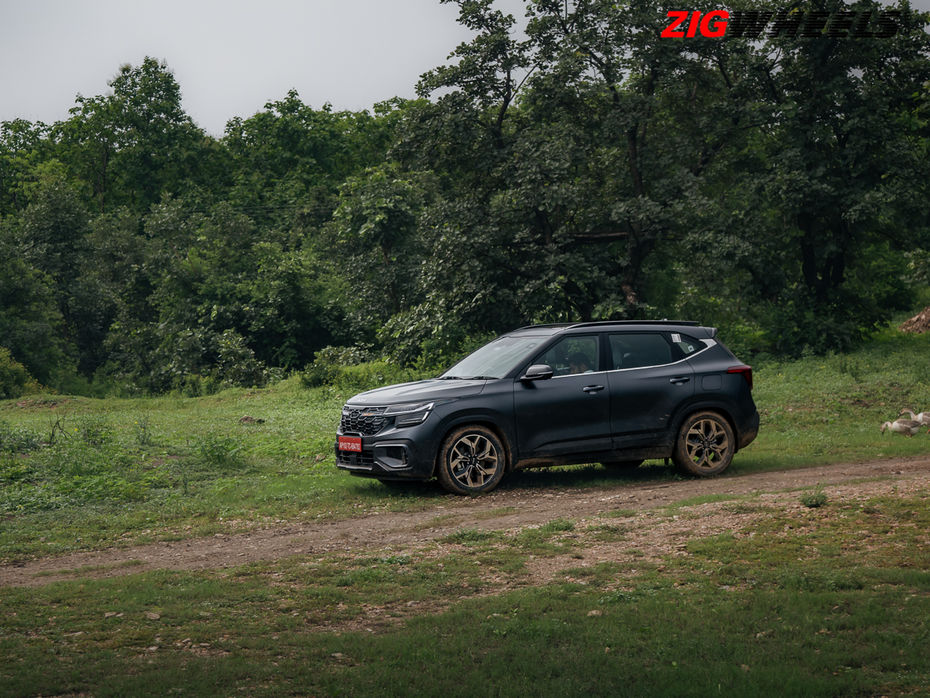
The Seltos is one of two options in the segment that let you choose a diesel motor. It should be your pick if you want a workhorse to munch the highway miles down calmly. There are three highlights to the experience: refinement, torque and efficiency. We sampled the 6-speed automatic which felt adequately responsive in every scenario. Do remember that the diesels now have an AdBlue tank — something you will have to refill every few thousand kilometres.
If it’s excitement you’re chasing — there’s only way out. Pick the 1.5-litre turbo petrol. It’s by far the most entertaining option with quick acceleration and a fast-shifting DCT. Kia claims it’s quicker to 100kmph by nearly a second, and in-gear acceleration is stronger too. On first impressions, we have no reason to doubt that claim. It will serve up giggles every time you ask. Be sure to keep an eye on the fuel efficiency readout though. Driven hard, expect to see single-digit numbers.
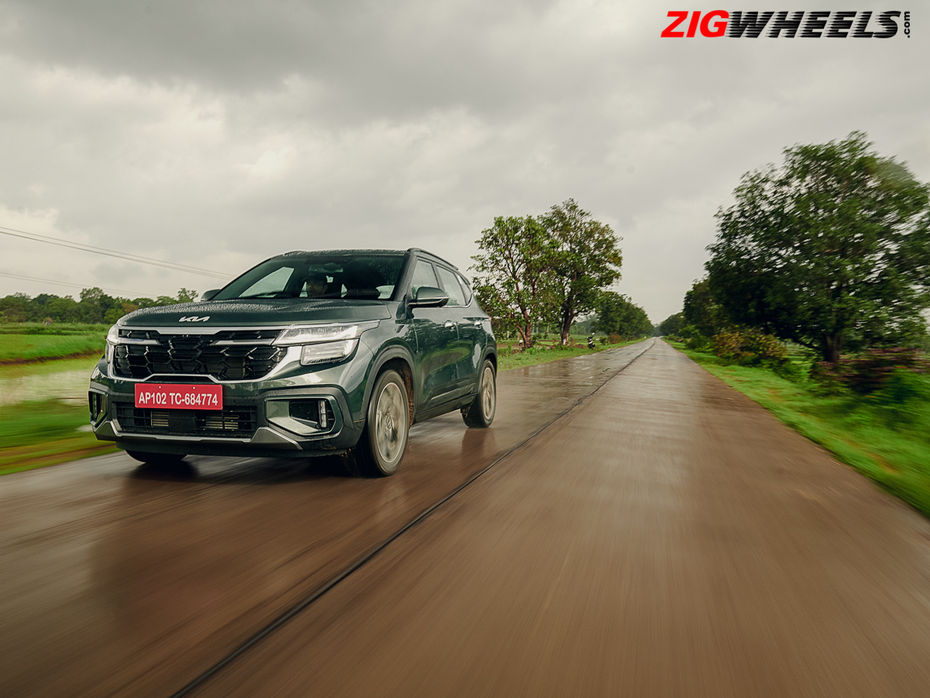
When the Seltos first came out, the ride was a little too stiff. Along the way, Kia made little tweaks to the setup, making the ride a lot more bearable. With the update, Kia claims it’s stiffer on the front, and a little softer at the rear.
This setup feels like something that works in most situations. The ride is easy on the back on smooth roads, and save for a little rocking movement on really broken roads, it’s comfortable there too. You’d like that the suspension settles quickly. There’s confidence at triple-digit speeds, and quick lane changes don’t faze it either.
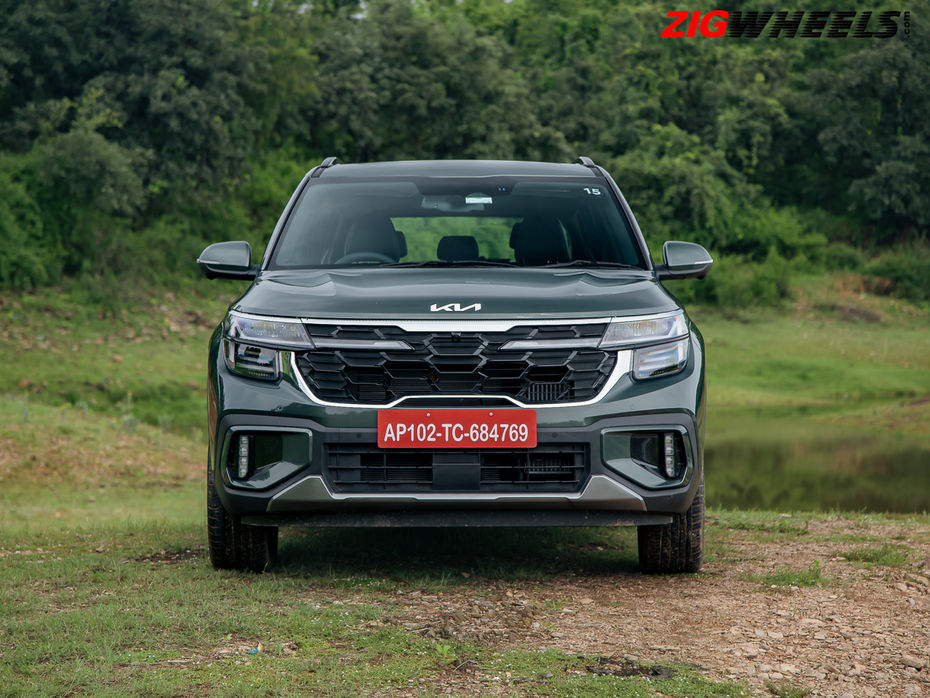
The Seltos doesn’t seem to have a proverbial ‘fatal flaw’. That’s right until the ghost of a crash test rears its ugly head. An average three-star rating isn’t something you can put marketing spiel on to cover up. With this one, there’s a little hope. While we won’t vouch for this to be safer before crash test results are announced, Kia is trying to calm nerves by telling us the structure has been reinforced and it ‘should’ perform better in a test.
They’re also attempting to reassure by providing a whole laundry list of safety features as standard. This includes electronic stability control, hill-start assist, tyre pressure monitoring system, all wheel disc brakes along with the basics of six airbags and ABS.
The top-spec trim now gets Level 2 ADAS, which means there’s adaptive cruise control, blind spot warning, lane keep assist, and auto emergency braking, all of which work as intended. Again, this should go a long way in preventing a crash. Should the unfortunate happen, I really hope Kia has a solid crash test rating to fall back on.
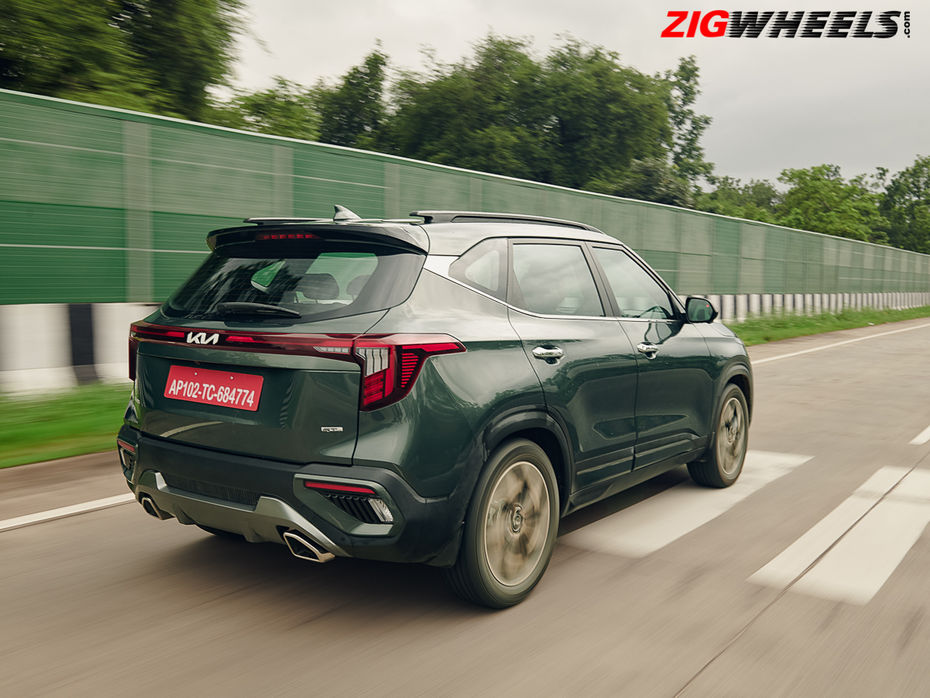
The Seltos facelift isn’t a monumental change. It’s a demonstration how incremental changes put together make a sizeable difference. You wouldn’t complain of quality, comfort, space or choice of engines even. With this update, it’s making SUVs a segment or two above pale in terms of features. It’s quite easy to sum up the new Seltos then. Two words: the benchmark.
And provided Kia gets a good safety rating in, I’ll add two more without hesitation: Buy it.


Hyundai Creta 2024 Review: First Drive

2024 Kia Sonet Review: The Ideal SUV For The Small Family?

Volkswagen Taigun First Drive Review: 10 Reasons Why It Lives Up To...

Honda Elevate First Drive Review | Sensible Family SUV

2022 Skoda Slavia Prototype Drive: Classy Customer!

MG Astor First Drive Review: Standing Out In Style

Toyota Hyryder Hybrid Review: Making Sensible Attractive?

2023 Tata Harrier Review: Much More Than A Facelift
 Hyundai Creta
Hyundai Creta
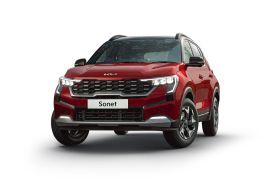 Kia Sonet
Kia Sonet
 Volkswagen Taigun
Volkswagen Taigun
 Honda Elevate
Honda Elevate
 MG Astor
MG Astor
India's largest automotive community